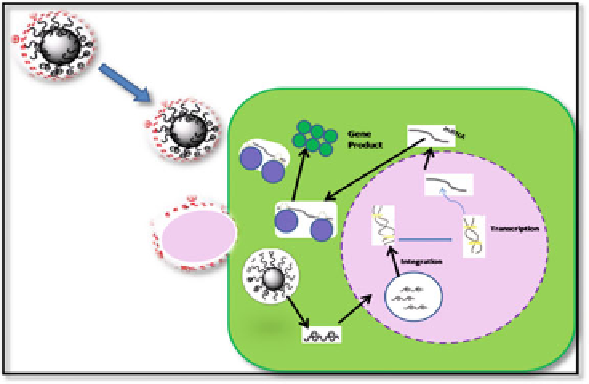Agriculture Reference
In-Depth Information
Fig. 10.5 Pictorial diagram of biotransformation of genes in modified nanoparticles and the
influence of positively charged surface modification
4. The advancement in the nanotechnology may open the way for further develop-
ment of efficient plant transformation system.
10.3.3 Conventional Biotransformation Technologies
in Plants
Plant transformation methods and vectors have been developed with the time to
enhance the efficiency and stable expression of transgene in plant transformation.
Currently available plant transformation methods can be divided into two main
groups: indirect and direct transformation method. The indirect method of plant
transformation is based on the introduction of a plasmid carrying the gene con-
structs into the target plant cell (Shestibratov et al.
2007
; Kakkar and Verma
2011
and
www.biotechnology4u.com
, Fig.
10.6
).
The well-known example of indirect method includes the use of
A. tumefaciens
-
or
A. rhizogenes
-based gene transfer in which their natural ability to infect and
transfer genes is utilized precisely to transfer specific genes into the cells (
www.
biotechnology4u.com
)
. Important events of T-DNA transfer and components
involved in the
Agrobacterium
-mediated gene transfer are outlined in Fig.
10.3
.
The
Agrobacterium
-based DNA transformation method offers many unique advan-
tages: (1) precise integration of genes with defined end, (2) transfer of desired DNA
along with the marker gene, (3) high frequency of stable and intact gene transfer,
and (4) ability to transfer long-stretch DNA (
150 kb) and reduced rate of trans-
gene silencing (Tzfira and Citovsky
2003
). Although,
Agrobacterium
-mediated
gene transfer is a widely and commonly used method, it has several drawbacks
>

